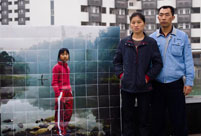TOKYO, Oct. 24 -- The operator of the crippled Fukushima Daiichi nuclear power plant is grappling to prepare itself for an advancing typhoon, the heavy rainfall from which will hamper the utility's ongoing efforts to contain contaminated water within the complex.
Officials from Tokyo Electric Power Co. (TEPCO) said Thursday that following radioactive water breaching multiple protective barriers around storage tanks following a powerful typhoon and storm last weak, causing toxic water to flow into the ocean, efforts are underway to make room for an influx of more contaminated water, as two more powerful typhoons approach.
Underground pools that have already been the cause of radioactive leaks in the past, are once again being used by the utility to house toxic rainwater accumulated following heavy downpours following typhoon Wipha sideswiping Japan's east coast last Wednesday and a powerful storm dumping more rain on the leaking facility on Sunday.
The water being pumped into the pools contains a maximum 970 becquerels per liter of strontium-90, TEPCO said, far higher than the 30 becquerels per liter legal limit for strontium-90 to be released into the sea, TEPCO said.
Highly contaminated water is already being stored in around 1, 000 hastily made storage tanks, which have also been responsible for radioactive leaks due to their shoddy construction the utility revealed, but as Typhoon Francisco is set to hit Japan over the weekend the tanks are at full capacity as are the basements of the plant's turbine buildings.
Three of seven underground pools therefore are being reopened despite three of them being found to contain leaks in April, as a last resort to contain massive amounts of rain expected this weekend.
TEPCO was forced to stop using the underground pools as desperately needed storage space, as the tsunami-ravaged Daiichi nuclear complex struggles to deal with a massive influx of around 400 tons of contaminated water a day, conceding the water after mixing with groundwater was subsequently flowing into the adjacent Pacific Ocean.
Compounding problems for the embattled utility, hot on the heels of Francisco is the more powerful Super Typhoon Lekima, which is currently the strongest typhoon of the 2013 season here.
While pulling Francisco southward, Lekima is advancing northward in open waters of the Pacific, according to Japan's meteorological agency, and advisories have been issued for most of the east coast here, following torrential rains caused by Wipha, causing mudslides that killed at least 31 people on the remote Izu Oshima island 100 km south of Tokyo.
Official evacuation orders have been issued on the island as military, fire and police services continue the search for those still unaccounted for.
Francisco and Lekima are expected to wreak havoc along the east coast, many areas of which have become infirm due to flooding from Wipha, and the Fukushima nuclear facility on the northeast coast, which failed to contain the extra rainfall from Wipha and powerful storm the following weekend, has been blasted for its efforts to deal with the ongoing crisis by Japan's nuclear watchdog.
Following Japan's Nuclear Regulatory Authority (NRA) receiving a report from TEPCO on its plans to enhance safety protocols and prevent further radioactive water leaks, senior NRA officials blasted the utility's efforts as "unconvincing" and their ability to deal with future problems as "doubtful."
The NRA's latest findings run contrary to Japan's Prime Minister Shinzo Abe's assessment of the situation, which he has repeatedly referred to as "under control."
In the latest of a string of radiation spikes in and around the Daiichi complex -- including in samples taken from the sea near the complex -- on Wednesday the utility admitted it found 140,000 becquerels per liter of beta-ray emitting radioactivity in a ditch, noting that the level of radioactivity at the spot had doubled in just 24 hours.
 Low wages Indian migrant laborers
Low wages Indian migrant laborers Five fighters in flight training
Five fighters in flight training London mayor hails free trade, subway system on China tour
London mayor hails free trade, subway system on China tour Different eye catching shows at housing fairs in China
Different eye catching shows at housing fairs in China Special family portraits call attention to left-behind children
Special family portraits call attention to left-behind children Tibetan girl helps mobilize volunteers onlin
Tibetan girl helps mobilize volunteers onlin Lingerie show dazzles Wuhan Motor Show 2013
Lingerie show dazzles Wuhan Motor Show 2013  Running in fun customs at Beijing Int'l Marathon
Running in fun customs at Beijing Int'l Marathon  Weekly Sports Photos
Weekly Sports Photos Chinese riot police take Liberia peacekeeping mission
Chinese riot police take Liberia peacekeeping mission World has never been dark-- a blind kid’s life in Tibet
World has never been dark-- a blind kid’s life in Tibet Change to law may make it easier to sue polluters
Change to law may make it easier to sue polluters UNESCO world heritage site: Montale Tower
UNESCO world heritage site: Montale Tower U.S. Senate leader announces bipartisan deal
U.S. Senate leader announces bipartisan deal Chinese screen goddesses from Beijing Film Academy
Chinese screen goddesses from Beijing Film Academy Day|Week|Month